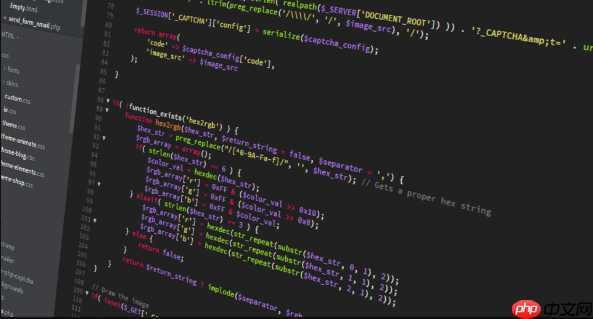答案:通过PHP实现移动设备兼容需检测用户代理、使用响应式模板、路由移动内容及优化性能。1. 利用HTTP_USER_AGENT识别移动设备并加载适配模板;2. 结合Bootstrap等框架与PHP动态填充内容,确保HTML具备响应式布局;3. 通过PHP路由将移动用户导向专用页面如mobile_home.php,复用逻辑与组件;4. 启用ob_gzhandler压缩输出、精简HTML并缓存内容以提升移动端加载速度。

If you are trying to access a PHP website on a mobile device, ensuring proper rendering and responsiveness is essential. Here are the methods to achieve mobile compatibility with PHP:
The operating environment of this tutorial: Samsung Galaxy S24, Android 14
PHP can identify whether a request comes from a mobile device by analyzing the HTTP_USER_AGENT string. This allows the server to serve different content or redirect appropriately.
Always test user agent detection across multiple devices to avoid false positives.
立即学习“PHP免费学习笔记(深入)”;
Instead of serving separate pages, use PHP to inject dynamic content into a responsive HTML structure that adapts to screen size using CSS media queries.
Responsive design reduces maintenance overhead by using one codebase for all devices.
Route users to mobile-optimized templates based on device type. This method provides tailored experiences while keeping navigation seamless.
Use include or require statements to reuse common components like headers and footers.
Mobile users often experience slower connections. PHP can help reduce load times by minimizing output and compressing responses.
Compressing output can significantly improve perceived performance on mobile networks.
以上就是php怎么用php打开手机_PHP移动端访问与响应式设计方法教程的详细内容,更多请关注php中文网其它相关文章!

PHP怎么学习?PHP怎么入门?PHP在哪学?PHP怎么学才快?不用担心,这里为大家提供了PHP速学教程(入门到精通),有需要的小伙伴保存下载就能学习啦!

Copyright 2014-2025 https://www.php.cn/ All Rights Reserved | php.cn | 湘ICP备2023035733号